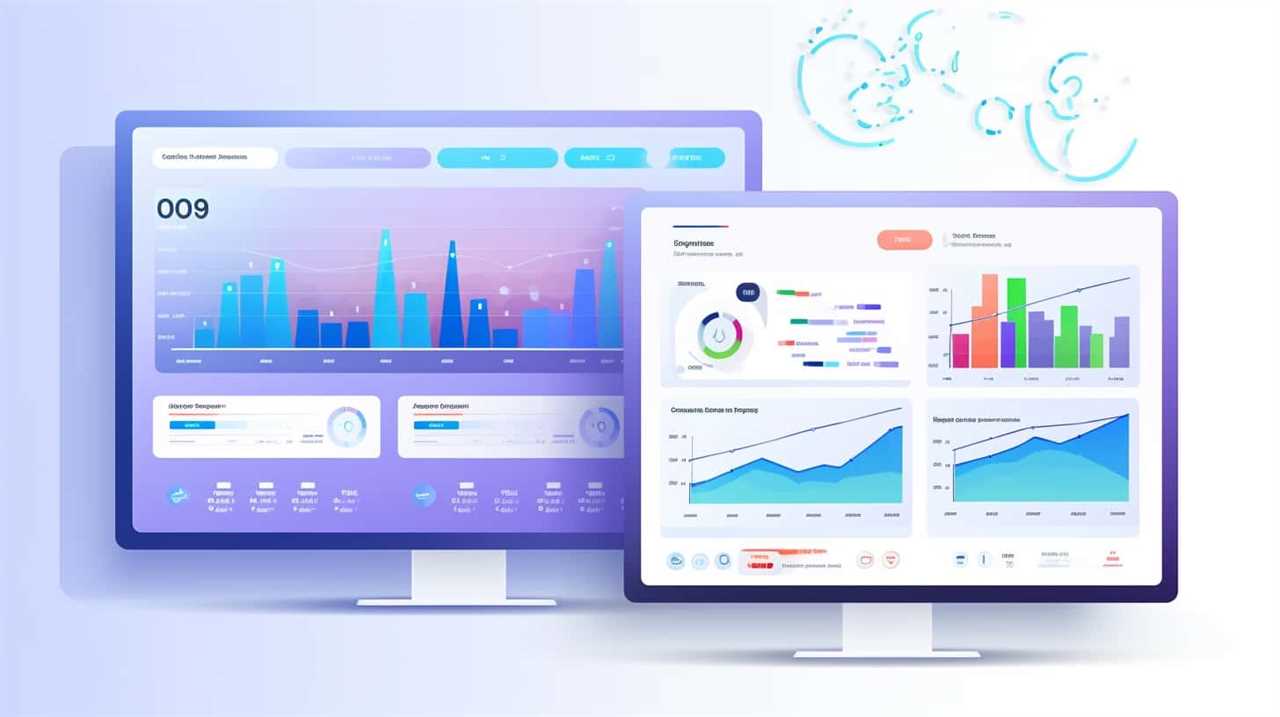You might be curious: what makes SEO crucial for local dance schools?
Well, let us tell you, it’s not just about getting your website seen. It’s about stepping up in search rankings and attracting more students to your classes.
With our expert tips and strategies, you’ll learn how to optimize your website, target the right keywords, and build high-quality backlinks.
Get ready to master the art of SEO and watch your dance school soar to the top of the search results.

Key Takeaways
- SEO improves search rankings and attracts more students to dance classes.
- Keyword research is essential for optimizing a dance school website and increasing visibility in search results.
- Optimizing website content, including title tags, meta descriptions, and header tags, is important for improving search engine rankings.
- Building high-quality backlinks and implementing local SEO strategies, such as optimizing local business listings and engaging with the local community, can help improve search rankings for local dance schools.
Importance of SEO for Local Dance Schools
We believe that implementing effective SEO strategies is crucial for local dance schools to improve their search rankings and attract more students. In today’s digital age, having a strong online presence is essential for any business, including dance schools.
By utilizing SEO techniques for improving dance school visibility, these institutions can increase their chances of being found by potential students who are actively searching for dance classes in their local area.
One of the main benefits of local SEO for dance schools is the ability to target a specific audience. With the right optimization strategies, dance schools can ensure that their website appears in search results when someone in their local area searches for keywords related to dance classes. This increases the likelihood of attracting students who are genuinely interested in enrolling in their classes.
Furthermore, implementing local SEO can also help dance schools build credibility and trust with their target audience. When a dance school’s website appears at the top of search results, it gives the impression that they’re a reputable and trustworthy institution. This can significantly influence a potential student’s decision to choose that particular dance school over others.

Understanding Search Engine Algorithms
To gain a deeper understanding of search engine algorithms, it’s important to analyze how they determine the rankings of websites. Search engine algorithms are complex formulas that take into account various factors to determine the relevance and quality of a website. These algorithms consider elements such as keyword usage, website structure, backlinks, and user experience.
One key aspect of understanding search engine algorithms is recognizing the importance of staying ahead of the competition in search rankings. As the online landscape becomes more competitive, it’s crucial for local dance schools to optimize their websites to rank higher in search engine results. By understanding how search engine algorithms work, dance schools can implement effective SEO strategies to improve their visibility and attract more potential students.
Staying ahead of the competition in search rankings requires continuous monitoring and adjustment of SEO tactics. Search engine algorithms are constantly evolving, and what works today may not work tomorrow. It’s essential for dance schools to stay updated with the latest trends and best practices in SEO to maintain their position in search rankings.
Keyword Research for Dance School Websites
Our focus now shifts to the important task of conducting keyword research for dance school websites. Keyword research is a crucial step in optimizing a dance school website for search engines. By identifying the right keywords, dance schools can increase their visibility in search results and attract more relevant traffic to their website.

To effectively conduct keyword research, it is important to understand the target audience and their search behavior. This involves analyzing the keywords that potential students might use when searching for a dance school. For example, keywords such as "dance classes for beginners" or "professional dance training" could be relevant for a dance school website.
To help visualize the process of keyword research, here is a table showcasing examples of potential keywords for a dance school website:
| Keyword | Search Volume | Competition |
|---|---|---|
| Dance classes | 10,000 | High |
| Ballet lessons | 5,000 | Medium |
| Jazz dance school | 1,000 | Low |
By conducting keyword research, dance schools can identify high-volume keywords with low competition, allowing them to optimize their website accordingly. It is also important to consider long-tail keywords, such as "contemporary dance classes in [city]", to target a specific location and attract local students.
In the next section, we will discuss how to optimize a dance school website using these researched keywords.

Optimizing Website Content for Search Engines
When it comes to optimizing website content for search engines, there are a few essential points to keep in mind.
First, conducting thorough keyword research is crucial to identify the most relevant and high-performing keywords for your dance school website.
Second, implementing on-page optimization techniques such as optimizing title tags, meta descriptions, and header tags can help improve your website’s visibility in search results.
Lastly, don’t forget to optimize your local business listings to ensure that your dance school appears in local search results, attracting potential students in your area.

Keyword Research Essentials
We will cover three essential steps for optimizing website content and improving search engine rankings through keyword research.
The first step is competitor analysis, which involves researching the keywords your competitors are using to rank higher in search results. By understanding their strategies, you can identify new opportunities and gain a competitive edge.
The second step is identifying long tail keywords, which are more specific phrases that have lower search volume but higher conversion rates. These keywords are essential for targeting a niche audience and driving qualified traffic to your website.
Lastly, it’s important to incorporate these keywords strategically throughout your website content, including in page titles, headings, meta descriptions, and body text.

On-Page Optimization Techniques
To continue our exploration of optimizing website content and improving search engine rankings, let’s delve into the realm of on-page optimization techniques. These techniques are crucial for ensuring that your website’s content is structured in a way that search engines can easily understand and index.
Here are three important on-page optimization techniques to implement:
- Content structure: Organize your website’s content into logical sections with clear headings and subheadings. This helps search engines understand the hierarchy and relevance of your information, improving your chances of ranking higher in search results.
- Meta tags: Optimize your meta tags, including the title tag and meta description, with relevant keywords that accurately describe your content. These tags provide search engines with important information about your website and can greatly impact your search engine visibility.
- Keyword optimization: Incorporate your target keywords naturally throughout your website’s content, including in headings, paragraphs, and image alt tags. However, avoid keyword stuffing, as it can negatively impact your rankings. Focus on creating high-quality, informative content that provides value to your audience.
Local Business Listing Optimization
Optimizing website content for search engines involves enhancing local business listings with a comprehensive and targeted approach.
Local business listing optimization is a crucial aspect of local search engine optimization (SEO), as it helps dance schools improve their online visibility and attract more local customers.

One important component of local business listing optimization is local business citation building. This involves creating consistent and accurate citations across various online directories and platforms, such as Google My Business, Yelp, and Yellow Pages.
These citations include important information about the dance school, such as its name, address, phone number, and website URL. By ensuring that these citations are accurate and consistent, dance schools can improve their chances of appearing in local search results, ultimately boosting their online presence and attracting more potential students.
Building High-Quality Backlinks for Better Rankings
Building high-quality backlinks is an essential practice in improving search rankings for local dance schools, as it helps increase visibility and authority online. To effectively build high-quality backlinks, dance schools can utilize the following strategies:
- Guest Blogging: Reach out to relevant dance websites or blogs and offer to write a guest post. By including a backlink to your dance school’s website in the author bio or within the content, you can generate quality backlinks while showcasing your expertise.
- Local Business Directories: Submit your dance school’s information to local business directories such as Yelp, Google My Business, and Bing Places. These directories not only provide valuable backlinks but also enhance your visibility in local search results.
- Partnerships and Sponsorships: Collaborate with other local businesses, dance studios, or community organizations to create mutually beneficial partnerships. By sponsoring events, offering discounts, or hosting joint workshops, you can gain backlinks from their websites and increase your online presence.
By implementing these link building strategies and utilizing effective outreach methods, local dance schools can enhance their search rankings and attract more potential students.

In the next section, we’ll explore local SEO strategies that can further optimize the online presence of dance schools.
Local SEO Strategies for Dance Schools
Now let’s delve into our local SEO strategies to further improve our dance school’s online presence and search rankings. Local SEO strategies play a crucial role in dance school marketing and can significantly impact our visibility in local search results.
To optimize our local search presence, we need to focus on a few key areas.
Firstly, we should ensure that our dance school’s website is optimized for local search. This includes using location-specific keywords in our page titles, meta descriptions, and content. Additionally, creating location-specific landing pages that highlight our dance classes and events in each area can help improve our local search optimization.

Secondly, it’s important to claim and optimize our Google My Business listing. This involves providing accurate and up-to-date information about our dance school, including our address, phone number, and business hours. Encouraging our students to leave reviews on our Google My Business page can also boost our local search rankings.
Finally, we should actively engage with our local community through social media and online directories. By participating in local events, collaborating with other businesses, and sharing relevant content on social media platforms, we can increase our visibility and attract more potential students.
Monitoring and Measuring SEO Success for Dance Schools
To gauge the effectiveness of our SEO efforts, we must track and analyze the performance of our dance school’s online presence. Monitoring and measuring SEO performance is crucial in order to identify what’s working and what needs improvement.
Here are three key ways to measure the success of our SEO strategies:

- Tracking keyword rankings: We need to keep an eye on how our targeted keywords are performing in search engine rankings. By monitoring changes in keyword rankings over time, we can assess the impact of our SEO efforts. This will help us identify which keywords are driving the most traffic to our website and make informed decisions about optimizing our content.
- Analyzing organic traffic: Another important metric to measure SEO success is organic traffic. By using tools like Google Analytics, we can track the number of visitors coming to our website through organic search. This data will give us insights into the effectiveness of our SEO strategies and help us identify areas for improvement.
- Monitoring conversion rates: Ultimately, the goal of our SEO efforts is to generate leads and conversions. By monitoring conversion rates, we can determine how well our website is performing in terms of turning visitors into customers. This data will allow us to make data-driven decisions to optimize our website and improve our conversion rates.
Frequently Asked Questions
How Can I Improve My Website’s Loading Speed to Enhance Its Search Engine Rankings?
Improving our website’s loading speed is crucial for better search engine rankings. We optimize website speed through techniques like image compression, minifying code, and leveraging browser caching. Mobile responsiveness is also vital for SEO success.
Are There Any Specific Guidelines to Follow When Writing Meta Descriptions for Dance School Websites?
When writing meta descriptions for dance school websites, it is important to include local keywords. These descriptions provide a concise summary of your page’s content and can greatly impact your search engine rankings.
What Are Some Effective Ways to Optimize Images on My Dance School Website for Better Search Engine Visibility?
Optimizing images on your dance school website is crucial for better search engine visibility. Use image optimization techniques such as compressing file sizes and adding descriptive alt text to improve your website’s SEO.
How Can I Effectively Use Social Media Platforms to Improve the SEO of My Dance School Website?
To improve the SEO of our dance school website, we can effectively use social media platforms. By engaging with our audience and building backlinks, we can increase our online visibility and attract more potential students.

What Are Some Common Mistakes to Avoid When Optimizing a Dance School Website for Local Seo?
When optimizing our dance school website for local SEO, we need to be aware of common mistakes to avoid. By implementing effective strategies, we can improve our search rankings and attract more students.
Conclusion
In conclusion, SEO is crucial for local dance schools to improve their search rankings and attract more students. By understanding search engine algorithms, conducting keyword research, and optimizing website content, dance schools can increase their online visibility and reach their target audience.
Building high-quality backlinks is another important aspect of SEO for dance schools. By obtaining links from reputable websites, dance schools can improve their credibility and authority in the eyes of search engines. This can ultimately lead to higher search rankings and more organic traffic.
Implementing local SEO strategies can further enhance the visibility of dance schools within their specific geographical location. This includes optimizing their website for local keywords, creating and managing Google My Business listings, and encouraging positive online reviews from satisfied students and parents.

Regular monitoring and measuring of SEO efforts is essential for dance schools. By tracking their search rankings, organic traffic, and conversion rates, dance schools can determine the success of their SEO strategies. This allows them to make necessary adjustments and improvements to their approach.
In conclusion, SEO is a powerful tool for local dance schools to improve their online visibility and attract more students. By implementing effective SEO strategies and continuously monitoring their efforts, dance schools can shine brightly in the vast universe of search results.










